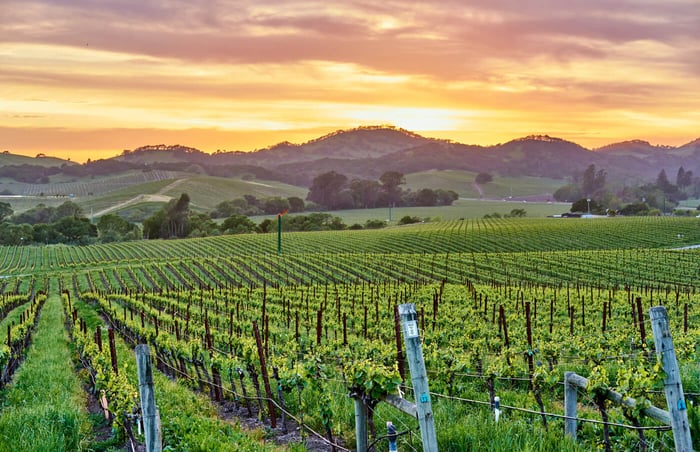The Napa Valley wine region is one of the most renowned wine regions in the world, known for its stunning scenery, rich history, and of course, its exceptional wine. Located in Northern California, the Napa Valley is home to over 400 wineries and vineyards, producing some of the finest wines on the planet. In this blog, we will take a closer look at the Napa Valley wine region and explore what makes it so special.
The History of the Napa Valley Wine Region
The Napa Valley wine region has a long and rich history, dating back to the mid-19th century when a group of European settlers first arrived in the area. These settlers brought with them their passion for winemaking and began planting grapevines in the fertile soil of the Napa Valley. Over time, the Napa Valley wine industry grew and flourished, attracting world-renowned winemakers and establishing itself as a hub for fine wine production.
In the 1960s, the Napa Valley wine region experienced a resurgence, with winemakers experimenting with new techniques and grape varieties to create unique, high-quality wines. This period of growth and innovation laid the foundation for the Napa Valley's current status as one of the premier wine regions in the world.
The Climate and Terroir of the Napa Valley
One of the key factors that sets the Napa Valley apart from other wine regions is its climate and terroir. The Napa Valley is located in a Mediterranean climate zone, characterized by warm, dry summers and mild, wet winters. This climate is ideal for grape growing, allowing the grapes to reach full maturity and develop their full flavor and aroma.
The terroir of the Napa Valley is equally important in shaping the unique character of its wines. The soil in the Napa Valley is a rich, fertile mix of clay, loam, and sand, which provides the perfect environment for grapevines to thrive. Additionally, the Napa Valley is surrounded by rolling hills and mountains, which provide protection from strong winds and help to regulate the climate.

Varietals Grown in the Napa Valley
The Napa Valley is known for its production of a wide range of wine varieties, including Cabernet Sauvignon, Chardonnay, Merlot, Pinot Noir, and Zinfandel, among others. Cabernet Sauvignon is particularly famous in the Napa Valley, with the region producing some of the best examples of this grape variety in the world.
Cabernet Sauvignon is known for its rich, full-bodied flavor profile, with notes of dark fruit, such as black cherry and blackberry, along with hints of chocolate and vanilla. The Napa Valley's warm, sunny climate and fertile soil provide the perfect growing conditions for Cabernet Sauvignon, allowing the grapes to develop their full flavor and aroma.
Chardonnay is another popular grape variety in the Napa Valley, known for its crisp, bright flavor and aromas of citrus and green apple. The Napa Valley's cool climate and well-draining soil provide the ideal environment for Chardonnay to flourish, resulting in some of the finest examples of this wine in the world.

Visiting the Napa Valley Wine Region
Napa Valley is a beautiful wine region located in Northern California, known for its picturesque rolling hills and world-class wineries. If you're planning a visit to Napa Valley, here are some things to keep in mind:
-
Wineries: Napa Valley has over 400 wineries, so it can be overwhelming to choose which ones to visit. Consider researching wineries in advance and making appointments to ensure a more personalized experience.
-
Timing: Napa Valley can be quite busy, especially during peak tourist season from June to October. If you prefer a more relaxed experience, consider visiting in the spring or fall.
-
Food: Napa Valley is known for its farm-to-table cuisine, with many restaurants featuring locally sourced ingredients. Be sure to make dining reservations in advance, as popular restaurants can fill up quickly.
-
Weather: Napa Valley has a Mediterranean climate with hot, dry summers and cool, wet winters. Be sure to check the forecast in advance and pack accordingly.
Overall, a visit to Napa Valley can be a truly unforgettable experience. With its stunning landscapes, world-class wineries, and delicious cuisine, it's a destination that should not be missed. Enjoy your trip!




